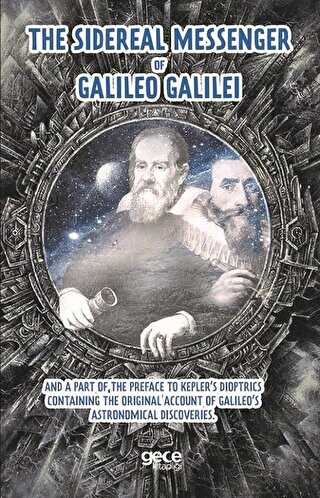The Sidereal Messenger of Galileo Galilei
Kitabı değerlendirin
0
Takip
0
Beğeni
0
Okuma
51
İzlenme
Tanıtım Yazısı
In 1609, Galileo, then Professor of Mathematics at Padua, in the service of the Venetian Republic, heard from a correspondent at Paris of the invention of a telescope, and set to work to consider how such an instrument could be made. The result was his invention of the telescope known by his name, and identical in principle with the modern opera-glass. In a maritime and warlike State, the advantages to be expected from such an invention were immediately recognised, and Galileo was rewarded with a confirmation of his Professorship for life, and a handsome stipend, in recognition of his invention and construction of the first telescope seen at Venice. In his pamphlet, The Sidereal Messenger, here translated, Galileo relates how he came to learn the value of the telescope for astronomical research; and how his observations were rewarded by numerous discoveries in rapid succession, and at[viii] length by that of Jupiters satellites. Galileo at once saw the value of this discovery as bearing upon the establishment of the Copernican system of astronomy, which had met with slight acceptance, and indeed as yet had hardly any recommendation except that of greater simplicity. Kepler had just published at Prague his work on the planet Mars (Commentaria de motibus Stellæ Martis), on which he had been engaged apparently for eight years; there he heard of Galileos discoveries, and at length was invited by Galileo himself, through a common friend, Giuliano de Medici, ambassador of the Grand-Duke of Tuscany, Cosmo de Medici II., to the Emperor Rudolph II., to correspond with Galileo on the subject of these discoveries. The Emperor also requested his opinion, and Kepler accordingly examined Galileos Sidereal Messenger in a pamphlet, entitled A Discussion with the Sidereal Messenger (Florence, 1610).
In this Discussion Kepler gives reasons for accepting Galileos observationsalthough he was not able to verify them from want of a telescopeand entirely supports Galileos views and conclusions, adducing his own previous speculations, or pointing out, as in the case of Galileos idea of earth-light on the moon, the previous conception of[ix] the same explanation of the phenomenon. He rejects, however, Galileos explanation of the copper colour of the moon in eclipses. Kepler ends by expressing unbounded enthusiasm at the discovery of Jupiters satellites, and the argument it furnishes in support of the Copernican theory.
In this Discussion Kepler gives reasons for accepting Galileos observationsalthough he was not able to verify them from want of a telescopeand entirely supports Galileos views and conclusions, adducing his own previous speculations, or pointing out, as in the case of Galileos idea of earth-light on the moon, the previous conception of[ix] the same explanation of the phenomenon. He rejects, however, Galileos explanation of the copper colour of the moon in eclipses. Kepler ends by expressing unbounded enthusiasm at the discovery of Jupiters satellites, and the argument it furnishes in support of the Copernican theory.
Tür: Bilim
Yazar: Galileo Galilei
Yayınevi: Gece Kitaplığı
ISBN: 9786052882603
Sayfa: 92s.
Kapak: Ciltsiz
Tarih: 2018
Kağıt Tipi: 2. Hamur
İncelemeler ve Alıntılar
The Sidereal Messenger of Galileo Galilei kitabı hakkında sen ne düşünüyorsun?


